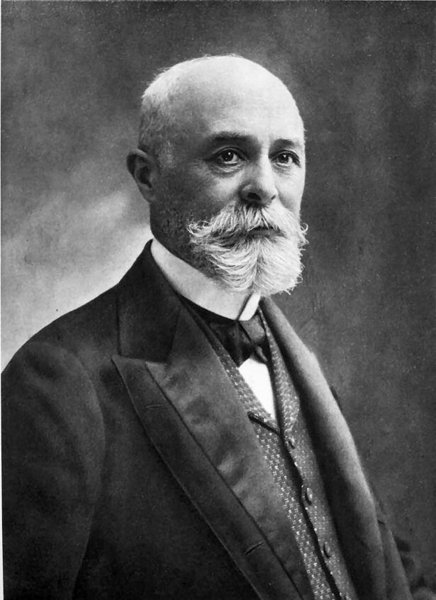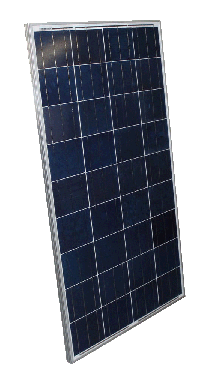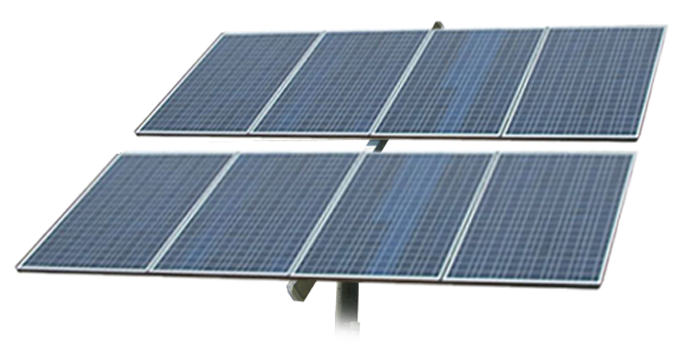The following information is taken from the Wiki at https://en.wikipedia.org/wiki/Solar_panel.
Photovoltaic solar panels absorb sunlight as a source of energy to generate direct current electricity. A photovoltaic (PV) module is a packaged, connected assembly of photovoltaic solar cells available in different voltages and wattages. Photovoltaic modules constitute the photovoltaic array of a photovoltaic system that generates and supplies solar electricity in commercial and residential applications.
In 1839, the ability of some materials to create an electrical charge from light exposure was first observed by Alexandre-Edmond Becquerel. Though the premiere solar panels were too inefficient for even simple electric devices they were used as an instrument to measure light. The observation by Becquerel was not replicated again until 1873, when Willoughby Smith discovered that the charge could be caused by light hitting selenium. After this discovery, William Grylls Adams and Richard Evans Day published “The action of light on selenium” in 1876, describing the experiment they used to replicate Smith’s results.
 In 1881, Charles Fritts created the first commercial solar panel, which was reported by Fritts as “continuous, constant and of considerable force not only by exposure to sunlight but also to dim, diffused daylight.” In 1939, Russell Ohl created the solar cell design that is used in many modern solar panels. He patented his design in 1941. In 1954, this design was first used by Bell Labs to create the first commercially viable silicon solar cell. In 1957, Mohamed M. Atalla developed the process of silicon surface passivation by thermal oxidation at Bell Labs. The surface passivation process has since been critical to solar cell efficiency.
In 1881, Charles Fritts created the first commercial solar panel, which was reported by Fritts as “continuous, constant and of considerable force not only by exposure to sunlight but also to dim, diffused daylight.” In 1939, Russell Ohl created the solar cell design that is used in many modern solar panels. He patented his design in 1941. In 1954, this design was first used by Bell Labs to create the first commercially viable silicon solar cell. In 1957, Mohamed M. Atalla developed the process of silicon surface passivation by thermal oxidation at Bell Labs. The surface passivation process has since been critical to solar cell efficiency.
Photovoltaic modules use light energy (photons) from the Sun to generate electricity through the photovoltaic effect. Most modules use wafer-based crystalline silicon cells or thin-film cells. The structural (load carrying) member of a module can be either the top layer or the back layer. Cells must be protected from mechanical damage and moisture. Most modules are rigid, but semi-flexible ones based on thin-film cells are also available. The cells are connected electrically in series, one to another to a desired voltage, and then in parallel to increase amperage. The wattage of the module is the mathematical product of the voltage and the amperage of the module.
A PV junction box is attached to the back of the solar panel and functions as its output interface. External connections for most photovoltaic modules use MC4 connectors to facilitate easy weatherproof connections to the rest of the system. Also, a USB power interface can be used.
Module electrical connections are made in series to achieve a desired output voltage or in parallel to provide a desired current capability (amperes) of the solar panel or the PV system. The conducting wires that take the current off the modules are sized according to the ampacity and may contain silver, copper or other non-magnetic conductive transition metals. Bypass diodes may be incorporated or used externally, in case of partial module shading, to maximize the output of module sections still illuminated.
Some special solar PV modules include concentrators in which light is focused by lenses or mirrors onto smaller cells. This enables the use of cells with a high cost per unit area (such as gallium arsenide) in a cost-effective way.
Solar panels also use metal frames consisting of racking components, brackets, reflector shapes, and troughs to better support the panel structure.
Each module is rated by its DC output power under standard test conditions (STC). Power typically ranges from 100 to 365 Watts (W). The efficiency of a module determines the area of a module given the same rated output – an 8% efficient 230 W module will have twice the area of a 16% efficient 230 W module. Some commercially available solar modules exceed 24% efficiency.
 Depending on construction, photovoltaic modules can produce electricity from a range of frequencies of light, but usually cannot cover the entire solar range (specifically, ultraviolet, infrared and low or diffused light).
Depending on construction, photovoltaic modules can produce electricity from a range of frequencies of light, but usually cannot cover the entire solar range (specifically, ultraviolet, infrared and low or diffused light).
A photovoltaic system typically includes an array of photovoltaic modules, an inverter, a battery pack for energy storage, charge controller, interconnection wiring, circuit breakers, fuses, disconnect switches, voltage meters, and optionally a solar tracking mechanism. Equipment is carefully selected to optimize output, energy storage, reduce power loss during power transmission, and conversion from direct current to alternating current.
Most solar modules are currently produced from crystalline silicon (c-Si) solar cells made of multicrystalline and monocrystalline silicon. In 2013, crystalline silicon accounted for more than 90 percent of worldwide PV production, while the rest of the overall market is made up of thin-film technologies using cadmium telluride, CIGS and amorphous silicon[19]
Emerging, third generation solar technologies use advanced thin-film cells.
The actual voltage and current output of the module changes as lighting, temperature and load conditions change, so there is never one specific voltage, current, or wattage at which the module operates. Performance varies depending on time of day, amount of solar insolation, direction and tilt of modules, cloud cover, shading, temperature, geographic location, and day of the year.
For optimum performance a solar panel needs to be made of similar modules oriented in the same direction perpendicular towards direct sunlight. The path of the sun varies by latitude and day of the year and can be studied using a sundial or a sunchart and tracked using a solar tracker. Differences in voltage or current of modules may affect the overall performance of a panel.
The largest challenge for photovoltaic technology is said to be the purchase price per watt of electricity produced. New materials and manufacturing techniques continue to improve the price to power performance.
Solar panel conversion efficiency, typically in the 20% range, is reduced by dust, grime, pollen, and other particulates that accumulate on the solar panel. “A dirty solar panel can reduce its power capabilities
The price of solar electrical power has continued to fall so that in many countries it has become cheaper than ordinary fossil fuel electricity from the electricity grid since 2012,
The kilowatt hour is equivalent to a single 1000 watt (1 kW) device used continually for 1 hour.
Single panels start at about $60 for 100 watt 12 volt units. 100 watts seems to be a good buy at this time. Many come with charge controller.

